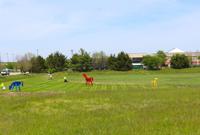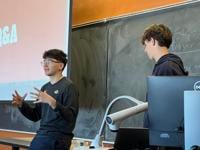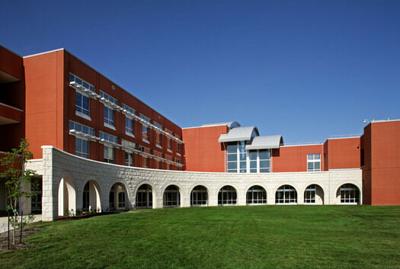Since 1962 when voters approved the city-county Junior College District, 1.3 million people have attended classes at what is now known as St. Louis Community College (STLCC).
Opening with 798 students at two local high schools in January of 1963, the district forged its way into the future, persevering in the unparalleled challenge of building three campuses at once in 1966 – Florissant Valley, Forest Park and Meramec.
Today, St. Louis Community College has four campuses, two education centers and two workforce training centers. And it is making another leap into the future with funds from an 8-cent property tax levy increase approved by voters in August 2021. The goal is to transform campuses into modern learning environments for today’s students and meet the workforce needs of the metropolitan area. In fact, the system’s strategic plan is called STLCC Transformed.
“We’re planning for about $400 million in new construction projects, renovation and demolition across the district, certainly including the Wildwood Campus,” Chancellor Jeff Pittman said. “... we’ve added a new nursing program out there.”
The district plans to build two additional buildings at each of the campuses all themed around workforce development and meeting the needs of the area economy.
“At the Wildwood Campus we’re planning a New Center for Health Sciences that will bring in a wide variety of programming in healthcare, and we’re also planning a second building for Technology Studies,” Pittman said. “Just given the rapid advancements in technology, a lot of the emerging companies coming into the St. Louis region and the expansion of the new National Geospatial-Intelligence Agency. This is going to be critical for the future of this region.
“That’s what we are utilizing these additional funds for, just expanding these opportunities.”
In addition to the construction of new buildings, there also will be the renovation of existing buildings and the demolition of some older facilities. Exciting and new will be the theme of renovations, buildings and technology. Plans are to update offerings to provide real-world learning experiences that will help students transition into the workplace more easily. Learning environments will be built to give students the tools they need to succeed. That goal, Pittman said, can be seen already at the new Allied Health Center at Forest Park, which was built in 2019. He said the $40 million facility has educational spaces that are suited to how instructors teach today, with more labs, simulation labs and smaller classes.
In addition, STLCC will be updating its job training and retraining programs that give students the skills needed in important industries like healthcare, information technology, financial services, biotechnology and manufacturing. Keeping up with the skills students need to move into careers that are rapidly changing as a result of new technology is no easy task, Pittman said.
“We have to be nimble as we always have in the past,” he noted.
As for students, they have more options to customize their educational path and reach their goals, saving both time and money. Dual admission track is one in which a student is enrolled at two colleges at once – STLCC and a partnering four-year university, such as Saint Louis University, the University of Missouri-St. Louis, or Missouri State University. According to STLCC, classes transfer easily and students transition seamlessly to the university after two years.
Pittman noted that the community college also offers a dual credit option for high school students. College credit-bearing classes are taught by high school teachers, approved by STLCC, on the student’s high school campus. Qualifying high school students can also apply for early college. During their junior and senior years, those students can take college classes full time on an STLCC campus, allowing them to graduate high school with their diploma and an associate’s degree.
Pittman said students also benefit from the expansion of the A+ program, which uses state funds to cover the cost of college tuition for up to 18-credit hours per semester.
Pittman said that between the dual credit and early college options whose costs are covered by partnering school districts through state funds, the A+ program and Pell grants, students often can achieve a free community college experience.
“It’s a wonderful benefit for Missourians,” he said.
Over the past 60 years, Pittman said, STLCC has made an immeasurable impact on both the economy of the St. Louis metropolitan area and the lives of the people who live here.
“One out of every two households in St. Louis County has had at least one of their family members attend St. Louis Community College. That’s a huge impact,” he said. “We’ve provided very affordable pathways to the residents of this area whether they are planning to continue their education at a university, or whether they are going directly into a job. Almost all of our students go through this experience with no college debt once they are finished. That’s really significant given the cost of higher education.
“There’s been a lot of benefits over the years.”
Looking forward, Pittman sees the community college system playing an even bigger role in attracting new businesses to the region.
“Given the changes in the economy in this post-COVID environment, our citizens need a community college more than ever. There is such a huge need for a skilled workforce in St. Louis County. If we are going to be competitive in trying to retain businesses here and attract new businesses here, we have to continue producing a qualified workforce,” he said. “That’s been a huge benefit of SLCC for the last 60 years. It’s made that workforce possible.”










